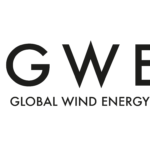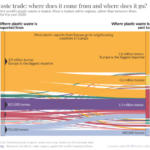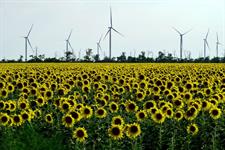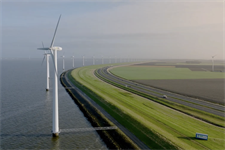EU offshore wind: A trade off between density and efficiency
Energy Disrupter
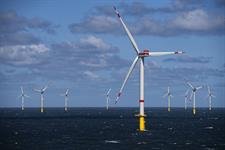
European countries are facing difficult decisions in their rush to build offshore wind farms to cut imports of Russian oil and gas, with an increasing prospect of project development in areas where dwindling wildlife populations and biodiversity are protected.
Faced with this conundrum, some countries have opted to build less efficient wind farms that require less space. In this way, they fit more projects into their crowded seas and generate more power overall, without disturbing protected ecological areas.
The European Union (EU) had already committed, in principle, to increasing offshore wind capacity at a scale “unprecedented” in the history of energy when it said, last year, that the ecological crisis was so severe, EU countries must speed up the construction process. In March 2022, the European Commission unveiled the outline of a plan to cut the continent’s spending on gas imports that helped Russia finance its invasion of Ukraine. To do that, it promised another “drastic” effort to build more wind and solar farms sooner.
It made no firm commitments to build more capacity than already planned, however, as the continent is already at full stretch trying to meet existing targets. With the EU’s current installed offshore wind capacity at about 28GW, the EU has already committed, in principle, to at least doubling that to between 60GW and 79GW by 2030. And it has also pledged a tenfold increase, to 300GW, by 2050, complemented by 40GW of ocean energy and other emerging technologies such as floating wind and solar.
Yet planners in the Netherlands and Germany – the countries with the most installed offshore wind capacity in the EU – have already had to make drastic compromises just to meet their 2030 targets.
The Netherlands
In March, the Dutch government approved plans to double the amount of wind power in its part of the North Sea by 2030. It conceded that it could only do so if it built projects that operated at 5% less efficiency than is typical for Dutch waters, according to project advisers and reports that informed the scheme.
After a long consultation with shipping, fishing, military and ecological organisations, the Netherlands concluded there is so little space in the crowded North Sea that they need to cram more wind turbines into the available space. They can increase the energy yield of a wind farm by 50% if they put double the amount of turbines into its allotted space. Doing this, however, means individual turbines would not run to maximum efficiency because they would sit too squarely within the wakes of other turbines. Wake losses are expected to rise by about 30%.
“We are not really in favour of that,” Hans Timmers, chief executive of the Netherlands’ Wind Energy Association, told Windpower Monthly when the plans were published. But it was necessary, he said, to protect nature.
“At the moment they’re looking to the easiest parts of the North Sea to accelerate building,” he said. “But when you get to the big roll-out later in the century, we have to look to the nature areas and the Natura 2000 areas [protected under EU law] as well. Natura 2000 is the big issue.”
The Netherlands’ new target, to double offshore wind to 21.5GW by 2030, will see a six-fold increase in the country’s offshore wind capacity. By 2050, it wants to grow to 70GW.
“My feeling is that this doubling of our targets for 2030 is already on the limits of what is achievable,” said Emile van Druten, who advises the Dutch government on nature-inclusive designs for offshore wind farms, on behalf of engineering consultancy WitteveenBos.
The Dutch plan will see turbines installed in its extra offshore wind areas at a density of about 10MW/km² – the limit of what was feasible.
“If you go higher, then the wake losses really start increasing,” said Druten.
Dutch North Sea wind farms already run, on average, at 6MW/km², the limit of what is considered required for optimum efficiency. EU and US offshore forecasters have typically assumed an optimum density of about 3.4MW/km².
At that latter rate though, Europe could not meet its wind targets without building in protected Natura 2000 areas, because only about 3% of the North Sea available for constructing wind farms was actually suitable, WitteveenBos concluded in a 2019 study for a Dutch-Danish offshore initiative. The report assumed that waters deeper than 55 metres would require floating turbines, which it expected would still be significantly more expensive than turbines on fixed-bottom foundations by around the year 2030.
Europe would fall short of its targets by a third if it did not build in conservation areas, assuming it strove to build offshore farms that operated at optimum efficiency, WitteveenBos concluded. But government priorities have since changed, said Druten.
“The trend was for optimal cost to drive development. But the trend now is, ‘Okay, cost isn’t everything. We want to squeeze more energy out of our available sea area’,” he said. This was heightened because public support for onshore wind was falling, particularly in the Netherlands.
Germany
At the turn of the year, a new coalition government came to power in Germany, also promising rapid offshore development at reduced efficiency. Germany’s draft plans to increase installed offshore capacity eight-fold, to 70GW by 2045, assumed a density of 10MW/km².
This would reduce the cost efficiency of German wind power, acknowledged the plan, but it would increase overall energy yield in the space available.
“The overall reduction in utilisation of the wind farms must be weighed against the achievement of the expansion targets [for] total electricity generation,” it said. That was merely to meet Germany’s 2030 target to build 30GW offshore. It still has to find space for the whole 70GW.
“It’s difficult to put 70GW in the areas we have now, even with an increase in the capacity density,” Rasmus Borrmann, an advisor to the German government for wind consultancy Deutsche WindGuard, told Windpower Monthly.
“Conservation areas are a factor because we have less space offshore in Germany and, obviously, the national conservation lobby is pretty much against it. But if you have such ambitious goals, it might become necessary,” he said.
Accelerated plans
This has been exacerbated by Russia’s invasion of Ukraine, because military agencies want to reserve more space at sea.
Under its outline of the RepowerEU plan, designed to make Europe independent of Russian oil and gas, the EU declared, in lieu of any pledge for more wind power, that its intensified search for areas of sea suitable for wind must avoid conservation areas “as much as possible”.
RePowerEU was concerned more with a need to “drastically” accelerate the transition of European industry from fossil fuels to renewables. The Dutch government pledged the same after its transport and agriculture industries were forecast to miss a 2030 target to cut greenhouse emissions by so much that the whole country would fail to meet its target. That was the old EU target to cut CO² emissions by 49% on 1990 levels. The Netherlands has since committed to a 55% cut, in accordance with the EU’s Fit-for-55 initiative last year. Its coalition government has pledged a 60% reduction.
The Netherlands’ plan to double offshore wind by 2030 has been designed to deliver the 55% CO² cut. The previous target of 11GW offshore wind was designed to meet the 49% emission reduction target.
Doubling offshore wind capacity would only reduce emissions by six percentage points more. The wind industry and Dutch government blamed the small increase on those industry sectors slow to decarbonise.
“Just adding more wind farms without further electrification or a switch to green molecules would not lead to carbon dioxide emission reduction when those wind farms do not replace ‘grey’ electricity,” said a spokesman for the Dutch ministry of economy, climate and energy.
The only reason the Dutch expected to get near the previous 49% target was because its electricity sector is expected to cut emissions by 70%, according to a government forecast in October.
Paul Koutstaal, head of climate research at the Dutch department of climate, air and energy, said offshore wind will make an important contribution to the large degree of decarbonisation expected in the electricity sector, but most of the Netherlands’ decarbonised electricity is expected to come from imports. Those are not guaranteed and so, if imports falter, gas is expected to make up the difference because the country’s last coal-fired power station will be closed by 2030.
The forecast used the old offshore wind target. The planned tenfold increase in offshore wind would follow in 2050. The Netherlands’ lack of space might not mean building in conservation areas, but rather not to build at all. The North Sea’s “fragile ecosystem” marked the opening and closing statements of the government’s offshore plan, and the theme runs through it. No increase in human activity is to be permissible in the North Sea, if the ecosystem can not not bear it, the plan decrees. It raises questions about how much more wind power capacity the North Sea can take.



